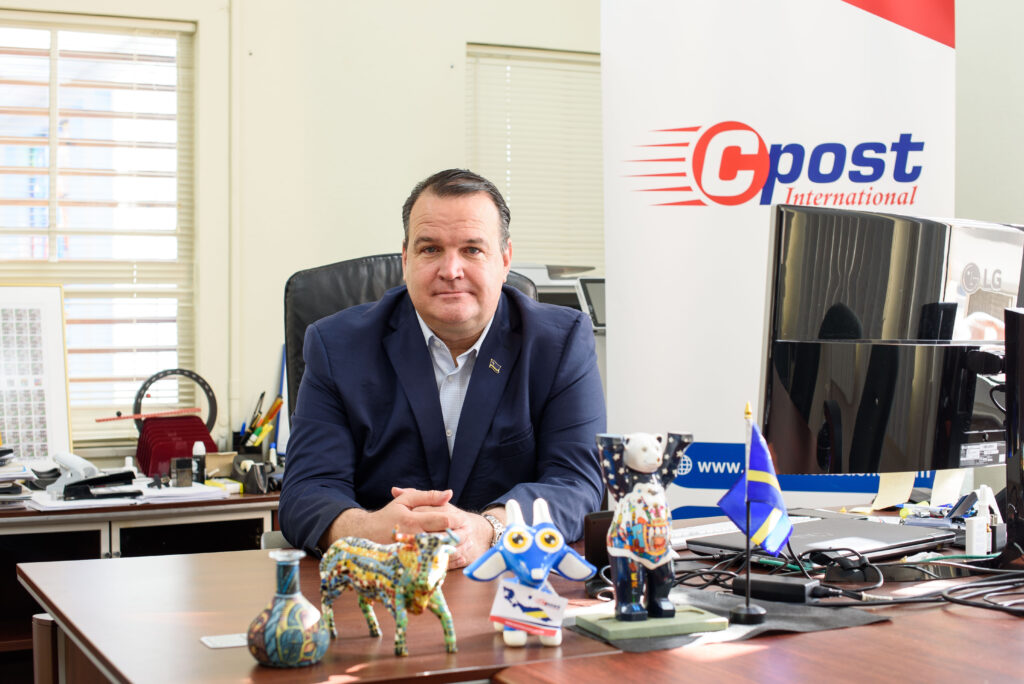Thomas Roggendorf, CEO, Cpost International and Postmaster General, Curaçao, will discuss and analyze the challenges and opportunities of installing community mailboxes at next week’s free-to-attend Parcel+Post Expo Conference, in Vienna, October 12-14, 2021.
What is your presentation about?
Small and medium-size posts are confronted with an expensive last-mile network with high fixed costs and rapidly declining, hugely expensive mail and letter deliveries. Community mailboxes (CMBs) are an interesting alternative to reduce the fixed cost and increase delivery standards. In 2016, Cpost International decided to go down this route. This presentation is about the challenges and opportunities of CMBs, with actual solutions and examples.
What are community mailboxes, and how do they work?
A CMB is a group placement of mailboxes accessible via a public road. In our case, a group comes in squares of 48 mailboxes (six boxes high by eight wide) or 54 (six high, nine wide). On average, a CMB location has between 500 and 1,500 individual mailboxes and the walking distance is between 300m and 700m.
For Curaçao we are planning for 175 CMB locations, which would bring down the delivery network from approximately 80,000 addresses to only 175 drop-off points. The CMBs are typically located in public squares, parks or other government property.
What benefits do they provide the postal operator? And the customer?
For a postal operator: obviously, if you reduce the number of your delivery points from 80,000 to 175 locations, you need fewer vehicles, which means less insurance, less maintenance, less fuel and fewer drivers. This represents a huge cost saving.
For us personally, Curaçao has no postal codes, so we rely heavily on the specific knowledge of the postal carriers. They need to know more than three routes, so it’s expensive and very time-consuming to train each postman. But this intensive training is not needed once a CMB location is installed.
Lastly, CMB deliveries hugely increase delivery D+3 standard.
We also thought a lot about what would benefit the customer. We did not want the customer have to go to a CMB location only to find out there is no post. So we developed an automatic notification system where the client receives an email or SMS when there is post in their mailbox. For this notification system and our security cameras, we used the internet. So the customer enjoys receiving a notification when they get post, and we can offer free wi-fi internet around every CMB and add neighborhood security via our security cameras.
Can you give us an example of the challenges and opportunities Cpost has experienced?
We faced several challenges. First, we needed to change postal law to add CMB delivery. Second, everybody offered locations for CMB but at huge rental cost. This would not serve the initial purpose of the project, so only public government land ended up being used.
We also faced initial resistance for community mailboxes from the neighborhoods, especially from the elderly residents. We held information sessions in every neighborhood where we placed a CMB; this greatly reduced resistance and built understanding about why we are doing this.
We also saw some great opportunities. We saw a huge cost reduction in personnel and vehicles – and also a reduction in greenhouse gases because of fewer vehicle miles. We have the possibility to expand the CMB into pickup and drop-off locations for parcels in the future, and there is also the possibility of opening up the CMBs for other delivery courier companies.
What advice would you give other posts or parcel companies thinking about using community mailboxes?
Personally I think this is a must-do for small, especially island, posts. Due to size, the local domestic market is just too small and relying only on international inbound e-commerce parcels will not cut it; the profitability and the volumes are just not there to cover the fixed (loop) network for traditional mail and letter post.
Check your postal law, change it if needed, start a pilot and once you decide to go this way, start informing the neighborhoods where you plan to place them.
Don’t miss Thomas’s presentation, entitled, ‘Community mailboxes – challenges and opportunities’, which is part of the ‘The convenience strategy for the competitive last mile’ track, on Thursday, October 14.
See the full conference program, here.



